





Swede
Swede – a two-year plant of family kapustovy. After landing on the first year the socket of leaves and a root, and on the second year – flowers and fruits (polyspermous pods) grows. The root for the second year becomes oval and large, its pulp of yellow-orange or white color. There is a theory which says that vegetable a swede was removed as a result of crossing of turnip and a white cabbage.
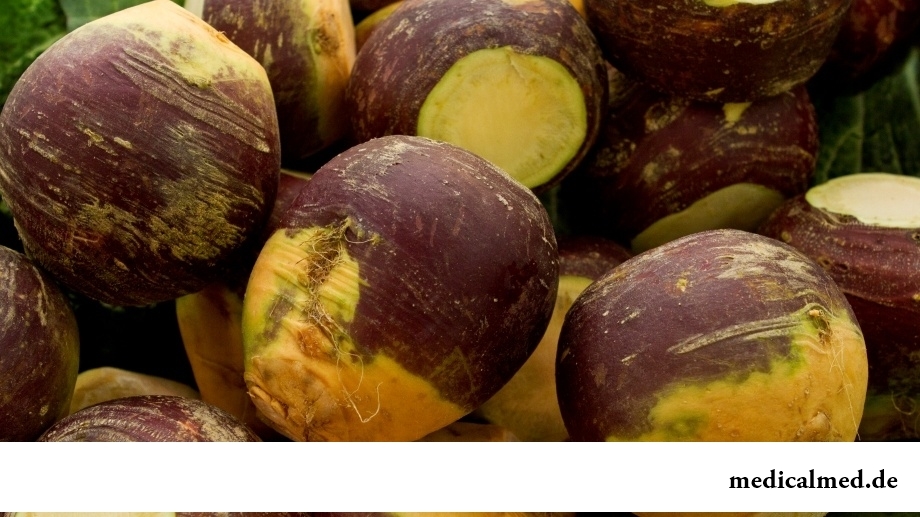
Useful properties of a swede
The swede contains a set of vitamins, minerals, sugar, cellulose, proteins, pectins and essential oil. At this vegetable there is a large amount of ascorbic acid (vitamin C), and it remains at long storage and heat treatment (even in the boiling water). Also vegetable the swede contains group B vitamins, carotene (provitamin A), vitamin P.
At a swede there is a large number of a microelement of calcium therefore it is shown to the use by the patient with osteoporosis. Also it contains magnesium, sulfur, phosphorus, iron, copper, potassium and sodium. Considering rich vitamin and mineral composition, the use of this vegetable is recommended at hypovitaminoses, especially in winter and early spring the periods.
Caloric content of a swede is small (only 37 kcal in 100 g).
In the Russian traditional medicine the swede is used long ago, several centuries ago it was applied at catarrhal diseases. It is quite rational as the rich content of ascorbic acid stimulates immunity. It is also known of use of seeds of a swede for treatment of children for measles.
Vegetable a swede is a valuable food stuff, it is used at locks, recommended to include in a diet of patients with cardiovascular diseases. Diuretic property of a swede is known long ago, and is used at treatment of hypostases of various origin.
The use of a swede in food contributes to normalization of a metabolism, decrease in level of cholesterol in blood (which is laid in vessels and creates atherosclerotic plaques). Therefore at atherosclerosis it is recommended to include a swede in a diet.
The swede possesses also mucolytic action, that is it promotes fluidifying of a phlegm and emergence of productive cough. This vegetable perfectly helps at chronic inflammatory diseases of lungs (chronic bronchitis, bronchial asthma, bronchial pneumonia).
The recipe of honey juice from a swede for treatment of cough: one swede of the average size is cleared of a peel, crushed in the meat grinder, and mixes up with honey in the ratio 2:1. To accept mix on 1 dessertspoon 4 times a day, washing down with a large amount of water, it is not dependent on meal.
Swede juice excellent wound healing and antiburn means as phytoncides which possess strong antimicrobic action are its part. Applying of gruel from a swede on purulent wounds promotes their clarification and healing. Besides fresh juice of a swede is shown at treatment of an iron deficiency anemia as it contains a large amount of iron.
Antiinflammatory properties of a swede are also known therefore they rinsing of an oral cavity at inflammatory diseases of its juice are used long ago and give good effect.
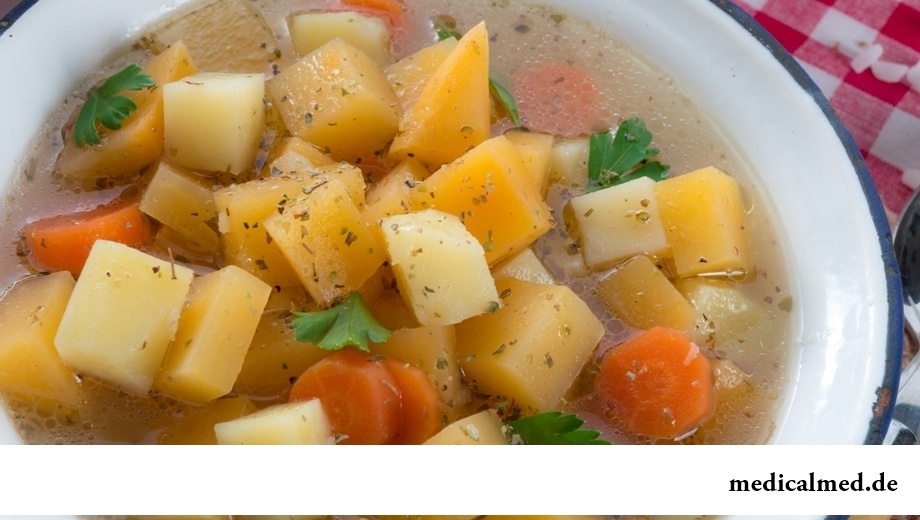
Contain in a swede of sulfowounds which promotes removal from an organism toxic substance and has anticarcinogen effect.
Swede also strengthen peristaltic reductions of intestines, improves digestion, normalizes a metabolism therefore it is very useful at obesity. And the low caloric content of a swede in combination with rich vitamin structure do it irreplaceable at fight against excess weight.
The swede is a hypoallergenic product (that is ability to cause its allergic reactions is low) therefore children of early age can include it in a diet.
At chronic locks it is better to use only swede juice as it has softer action.
The swede at acute diseases of digestive tract is contraindicated.
Drug for cough Terpinkod is one of leaders of sales, not because of the medicinal properties at all.

Each person knows that fervescence is an illness sign. However about existence of diseases can to suite...
Section: Articles about health
Antibiotics - - it is possible to call the chemical compounds suppressing growth of bacteria the break in the field of medicine which allowed to save mankind from many diseases incurable earlier: tuberculosis, plague, syphilis and many others. A contribution of drugs to rescue of people from...
Section: Articles about health
Sugar - the digestible refined product which is not of special value for an organism of the modern person. The use of sugar in food is based rather on the psychological dependence caused by desire to indulge itself with something tasty, and further and the biological, caused need of an organism for glucose as a result of big emissions of insulin in blood. Such circulation of insulin and glucose with continuous increase in portions of sugar is rather offensive and can become the reason for a narusha...
Section: Articles about health
A little more than a century ago goat milk was a traditional food stuff of most of Russians. Unfortunately, today on tables...
Section: Articles about health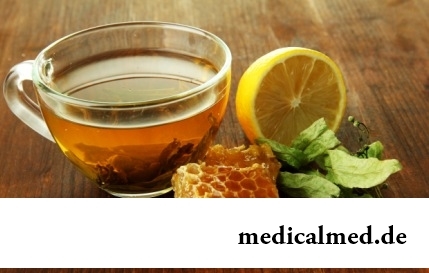
Cold – a state known to everyone which is followed by cold, cough, high temperature, a pharyngalgia. Often the first that we begin to do in hope again to become healthy – to accept medicines which are not always harmless, then...
Section: Articles about health
The pancreas performs two functions in a human body: release of enzymes without which digestion of carbohydrates, fats and proteins, and a producing hormones is impossible. The most important of them - insulin, is the main participant of carbohydrate metabolism normalizing processes of education and utilization of glucose, the main energy source for an organism....
Section: Articles about health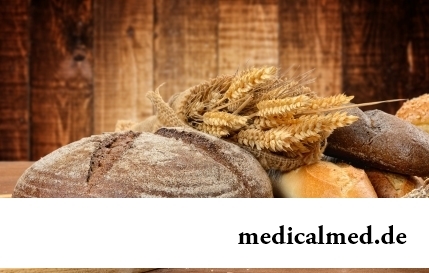
There is an opinion that at low temperatures safety of products is ensured longer and better thanks to what the refrigerator considers...
Section: Articles about health
For anybody not a secret that the modern person eats not as his ancestors. For the last 100 years in broad access there were absolutely new products which are result of use of the latest technologies in food production. Significantly changed спо...
Section: Articles about health
Bulimia and anorexia, are heavy deviations of a feeding behavior, become a cause of death of patients much more often than all other nervous breakdowns combined. In 60% of cases two illnesses accompany each other: patients feel horror before danger of set of excess weight and try to refuse as often as possible food, but periodically suffer from attacks of sudden hunger and an uncontrollable overeating. Each patient with anorexia and bulimia needs the help qualified пс...
Section: Articles about health
Some people consider what for medicine of the 21st century of secrets in the field of health of the person almost does not exist. It absolutely not so. Than Bol...
Section: Articles about health
Turnip, radish, horse-radish – once these and other products enjoyed wide popularity at our ancestors, being not only the food sating an organism but also the medicines curing of many diseases. Unfortunately, having given the use of some of them...
Section: Articles about health
We present to yours the TOP of the medicamentous means exerting the stimulating impact on a potentiality, i.e. on ability of the man to commission of sexual intercourse. At once it is necessary to tell that not always disturbances of erectile function can be eliminated with reception of this or that drug. The reasons of decrease in a potentiality there can be a set, from banal overfatigue before tumoral process in a small basin therefore if the man faces similar problems too often, it should turn...
Section: Articles about health
For anybody not a secret that our country is one of the most "drinking" in the world. At clear understanding of that the use of strong...
Section: Articles about health
The nature does not stand stagnation and monotony. It is known that tissues of a human body atrophy if do not receive necessary loadings. It fully belongs also to a cerebral cortex: when it is not given full-time job, it begins to function worse. In резуль...
Section: Articles about health
Practice of use of table salt in the therapeutic purposes contains not one century. Applications which do by means of the fabric impregnated with saline solution are considered especially effective. They have antibacterial and antiinflammatory effect, help to heal wounds, exempt fabrics from excess liquid. Hypertonic salt solution of potassium chloride is applied outwardly at many morbid conditions. Let's tell about the most known of them....
Section: Articles about health
One of the useful properties presented to the person by the nature is ability to feel fear. This ability is called a signal...
Section: Articles about health
Osteoporosis this general disease which main sign is decrease in density of a bone tissue. On distribution width it takes the fourth place among noninfectious diseases. The illness develops at mature age more often: in our country to them harvest seasons...
Section: Articles about health
Any of us is not insured from a heavy illness of the loved one. Happens and so that someone from family members becomes the bed patient, and remains in such state for a long time. It extremely suppresses both the most injured, and all its house which life considerably changes....
Section: Articles about health
Climax - process of fading of reproductive function of an organism in process of its aging. At women the main sign of its approach showing...
Section: Articles about health
The depression not without reason is considered one their main troubles of our century: for scientific and technical progress, acceleration of rate of life and a surplus of information of people it is forced to pay with stresses, negative emotions and weakening of protective forces of an organism. As a result ш...
Section: Articles about health
Venereal diseases in medicine are called the infections which are transmitted preferential sexually, now they and are called - infections, sexually transmitted, or STD. Among them is also life-threatening. In spite of the fact that the majority of diseases such will respond to treatment, they are widespread everywhere, and there is no tendency to decrease in incidence. Besides, some of them promptly look younger: statistically, a third of young people at the age of 16-22 years of a str...
Section: Articles about health
From the failure of work of immune system which is shown in the form of an allergy, statistically, more than 40% of the population of the globe suffer. In большинс...
Section: Articles about health
The stroke is one of the most widespread diseases of the person, annually in the world about 6 million cases of this pathology are registered. According to medical statistics, strokes occur almost three times more often than myocardial infarctions. Disease otno...
Section: Articles about health
Feeding by a breast - the integral part of ideal motherhood allowing to come into contact with the kid and to create to it healthy immunity since early years. Nevertheless, this important process in life of mother and child can be saddened laktostazy − by a milk delay in a mammary gland. What main reasons for a laktostaz? How not to allow problems with breastfeeding? Let's consider 10 premises resulting in stagnation of milk at the nursing mother....
Section: Articles about health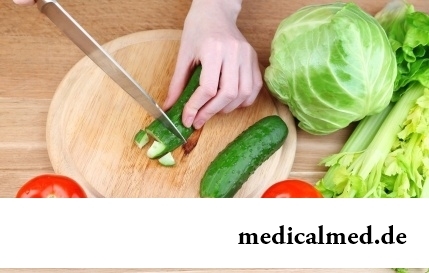
Very often as a source of the infection which caused a disease serves our house - the place which a priori has to be safe. However...
Section: Articles about health
Use of medicinal plants in therapy is urgent today, more than ever. The drugs made of curative herbs cannot replace completely modern synthetic drugs, but their use becomes frequent serious help in simplification a leak...
Section: Articles about health
Life of the modern woman is very difficult. Opportunities to realize itself are wide: it not only education and career, but also the most various hobbies from sport before needlework. It is not less important to build private life, paying an attention maximum to children, the husband, parents, friends. For all these affairs there is catastrophically not enough time therefore each of us tries to cut down as far as possible its expenses on necessary, but not the most fascinating housework. With it we are successfully helped by means...
Section: Articles about health
